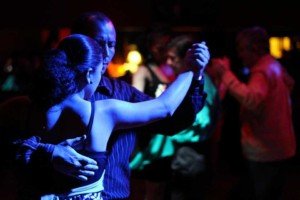 Argentine Tango is an intricate and improvised dance form, with a long history and participants all over the world. Tango aficionados attend workshops to refine their skills. Workshop teachers often take us, “back to basics,” which in the case of Argentine Tango, is walking. (Who knew how much there is to just walking?) Going back to basics, we discover new nuances, and new ways of thinking and using what we already know.
Argentine Tango is an intricate and improvised dance form, with a long history and participants all over the world. Tango aficionados attend workshops to refine their skills. Workshop teachers often take us, “back to basics,” which in the case of Argentine Tango, is walking. (Who knew how much there is to just walking?) Going back to basics, we discover new nuances, and new ways of thinking and using what we already know.
As ISE launches into blogging about our experience, I thought it would be appropriate to write about Agile from a “back to basics” perspective – and also consider how those basics from Argentine Tango might give us new nuances, and new ways of thinking by using what we already know about Agile.
Adapting to Reality
In Argentine Tango, the leader leads the follower into steps and sequences that interpret the music and build the connection between the dancers. No matter how skilled (or not ![]() ) each dancer is, that leading and following is based on kinesthetic communication – and we often end up with something different than we expected. Any attempt to lead a “next step” that we are not set up for, or that the follower is unable to interpret from that leader, is futile. In the movie “Scent of a Woman,” Al Pacino’s character says, “If you get tangled up, just Tango on.” Fundamentally, this is Agile – responding to change over following a plan. Where are we right now? What can we effectively do from this moment and this reality? Answering those questions with grace and creativity gives us the best chance at creating desirable outcomes.
) each dancer is, that leading and following is based on kinesthetic communication – and we often end up with something different than we expected. Any attempt to lead a “next step” that we are not set up for, or that the follower is unable to interpret from that leader, is futile. In the movie “Scent of a Woman,” Al Pacino’s character says, “If you get tangled up, just Tango on.” Fundamentally, this is Agile – responding to change over following a plan. Where are we right now? What can we effectively do from this moment and this reality? Answering those questions with grace and creativity gives us the best chance at creating desirable outcomes.
Creating Something Together
Within the basic structure of leader and follower, Tango invites us to create the dance together. As we become more skilled, the follower has more and more leeway to exercise creativity and create beauty within the overall sequence. This brings to mind Agile’s value of individuals and interactions, and the emergence of value from self-organizing teams. We ask: Who are we as individuals? What strengths and capabilities do we bring to our collaboration? What can we create together that is beyond what we could have created individually? How will we enable that? In Agile, as we become more skilled at creating something together, we are capable of extraordinary feats – and may create astonishing results!
Feedback, feedback, feedback
Feedback is essential to learning and improving. Argentine Tango gives us immediate feedback in the form of “what happened.” Whether we learn from that or not is up to us. Did a transition seem awkward or leave us in a difficult position for a next step, or did our leading and following play out smoothly? What can we learn from what happened? Shall we try that again? In our Agile world, some feedback is clear and immediate – our automated tests, for example – but other feedback may be slower in coming. Strong Agile teams are always looking for feedback, whether through formal tools such as Sprint Reviews, Retrospectives, and Five Whys, or simply through the day-to-day observation of “what happened.”
Learning by Doing
Many Argentine Tango communities encourage dancers to dance with all the available partners – this not only builds community, but builds our skills and resilience by teaching us to lead and follow through the individual variations of our kinesthetic language. At the start of a new dance with a new partner, we have very little information: What does this partner know? What steps can be lead or followed? At what speed? Without prolonged analysis, we simply step into the dance and learn far more, and more quickly, than we could any other way. In Agile, one reason that we value working software over comprehensive documentation is that we learn far more quickly from attempting to create something functional and valuable than we ever could from simply analyzing and documenting. Our agile mindset asks us to face complexity and uncertainly squarely and ask: Given what we don’t know, how could we create both value and learning from a simple step forward?
Put one foot forward, and then another…
I’m excited to see where this blogging adventure takes us. Teaching others and describing our experience is often a path to deepening our own learning while also building the learning of others – and as I have learned from Tango workshops, there is a world of new information available to us when we return to the basics of putting one foot in front of the other…
Tango on!
Originally published May 24th, 2016 on the Innovative Software Engineering blog. Republished with permission.